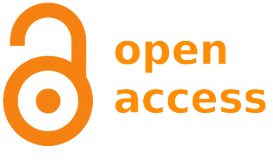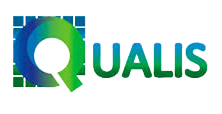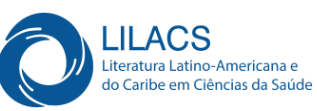The influence of loss aversion on the decision to work overload
DOI:
https://doi.org/10.5433/2236-6407.2020v11n2p166Keywords:
occupational stress, decision making, aversionAbstract
The present study aimed to evaluate the moderating role of burnout in the relationship between loss aversion and making a decision to suffer work overload. A total of 128 professionals over 18 years old inserted in the job market participated in the study, responding to a burnout measure and evaluating a work overload scenario. A loss aversion effect on the decision to suffer work overload was noted, although burnout did not moderate this relationship. Sociodemographic variables also did not influence decision making. This study highlights the heuristic potential of loss aversion as an automatic mechanism that can influence the decision to overwork at work. Thus, it is important pay attention to exposing individuals to decision-making processes, because this can impact negatively both the individual (in the short term) and the organization itself (in the medium and long term).
Downloads
References
Alarcon, G. M. (2011). A meta-analysis of burnout with job demands, resources, and attitudes. Journal of Vocational Behavior, 79(2), 549-562. doi:10.1016/j.jvb.2011.03.007
Aloha, K., Toppinen-Tanner, S. & Seppänen, J. (2017). Interventions to alleviate burnout symptoms and to support return to work among employees with burnout: Systematic review and meta-analysis. Burnout Research, 4, 1-11. doi:10.1016/j.burn.2017.02.001
Aronsson, G., Theorell, T., Grape, T., Hammarström, G., Hogstedt, C., … Hall, C. (2017). A systematic review including meta-analysis of work environment and burnout symptoms. BMC Public Health, 17, 1-13. doi:10.1186/s12889-017-4153-7
Barberis, N. C. (2013). Thirty years of Prospect Theory in economics: A review and assessment. Journal of Economic Perspectives, 27(1), 173-196. doi:10.1257/jep.27.1.173
Benevides-Silva, A. M. T. (2002). Burnout: O proceso de adoecer pelo trabalho. In A. M. T. Benevides-Silva (Ed.), Burnout: quando o trabalho ameaça o bem-estar do trabalhador (pp. 21-91). São Paulo, SP: Casa do Psicólogo.
Boyce, C. J., Wood, A. M., & Ferguson, E. (2016). Individual differences in loss aversion: Conscientiousness predicts how life satisfaction responds to losses versus gains in income. Personality and Social Psychology Bulletin, 42(4), 471-484. doi:10.1177/0146167216634060
Canessa, N., Crespi, C., Baud-Bovy, G., Dodich, A., Falini, A., Antonellis, G., & Cappa, S. F. (2017). Neural markers of loss aversion in resting-state brain activity. NeuroImage, 146, 257-265. doi:10.1016/j.neuroimage.2016.11.050
Carlotto, M. S., Dias, S. R. da S., Batista, J. B. V., & Diehl, L. (2015). O papel mediador da autoeficácia na relação entre a sobrecarga de trabalho e as dimensões de Burnout em professores. Psico-USF, 20(1), 13-23. doi:10.1590/1413-82712015200102
Carrasco, H., Martínez-Tur, V., Peiró, J. M., García-Buades, E., & Moliner, C. (2011). Service climate and display of employees' positive emotions: The mediating role of burnout and engagement in services. Psychologica, 55, 229-253.
Dalcin, L., & Carlotto, M. S. (2018). Síndrome de burnout em professores no Brasil: Considerações para uma agenda de pesquisa. Psicologia em Revista, 23(2), 745-770. doi:10.5752/P.1678-9563.2017v23n2p745-770
De Francisco, C., Arce, C., Vílchez, M. del P., & Vales, Á. (2016). Antecedents and consequences of burnout in athletes: Perceived stress and depression. International Journal of Clinical and Health Psychology, 16(3), 239-246. doi:10.1016/j.ijchp.2016.04.001
Demerouli, E., Backer, A. B., Nachreineir, F., & Shaufeli, W. B. (2001). The job demands-resouces model of burnout. Journal of Applied Psychology, 86(3) 499-512. doi:10.1037/0021-9010.86.3.499
Dreison, K. C., Luther, L., Bonfils, K. A., Sliter, M. T., McGrew, J. H., & Salyers, M. P. (2018). Job burnout in mental health providers: A meta-analysis of 35 years of intervention research. Journal of Occupational Health Psychology, 23(1), 18-30. doi:10.1037/ocp0000047
Fogarty, T. J., Singh, J., Rhoads, G. K., & Moore, R. K. (2000). Antecedents and consequences of burnout in accounting: Beyond the role stress model. Behavioral Research in Accounting, 13, 31-67.
Füllbrunn, S. C., & Luhan, W. J. (2017). Decision making for others: The case of loss aversion. Economics Letters, 161, 154-156. doi:10.1016/j.econlet.2017.09.037
Grolleau, G., Kocher, M. G., & Sutan, A. (2016). Cheating and loss aversion: Do people cheat more to avoid a loss? Management Science, 62(12), 3428-3438. doi:10.1287/mnsc.2015.2313
Heilman, R. L., Green, E. P., Reddy, K. S., Moss, A., & Kaplan, B. (2017). Potential impact of risk and loss aversion on the process of accepting kidneys for transplantation. Transplantation, 101(7), 1514-1517. doi:10.1097/TP.0000000000001715
Highhouse, S. (1997). Understanding and improving job-finalist choice: The relevance of behavioral decision research. Human Resource Management Review, 7(4), 449-470. doi:10.1016/S1053-4822(97)90029-2
Highhouse, S., & Johnson, M. A. (1996). Gain/Loss asymmetry and riskless choice: Loss Aversion in choices among job finalists. Organizational Behavior and Human Decision Processes, 68(3), 225-233. doi:10.1006/obhd.1996.0101
Hofstede, G. (1980). Culture's consequences comparing values, behaviors, institutes and organizations across nations. Beverly Hills: Sage.
Hyeda, A., & Handar, Z. (2011). Avaliação da produtividade na síndrome de Burnout. Revista Brasileira de Medicina do Trabalho, 9(2), 78-84.
Kahneman, D. (2012). Rápido e devagar: duas formas de pensar. Rio de Janeiro, RJ: Objetiva.
Mannor, M. J., Wowak, A. J., Bartkus, V. O., & Gomez-Mejia, L. R. (2016). Heavy lies the crown? How job anxiety affects top executive decision making in gain and loss contexts. Strategic Management Journal, 37(9), 1968-1989. doi:10.1002/smj.2425
Maslach, C., & Jackson, S. (1981). The Maslach Burnout Inventory. Palo Alto, CA: Consulting Psychologists Press.
Maslach, C., & Leiter, M. P. (2015). Editorial: It's time to take action on burnout. Burnout Research, 1, 1-2. doi: 10.1016/j.burn.2015.05.002
Maslach, C., Schaufeli, W. B., & Leiter, M. P. (2001). Job burnout. Annual Review of Psychology, 52(1), 397-422. doi:10.1146/annurev.psych.52.1.397
Modesto, J. G. N. (2018). "Por que corruptos são corruptos?": Propositura e apresentação de evidências do Modelo Analítico da Corrupção. Brasília, DF: Universidade de Brasília.
Pettigrew, T. F. (2018). The emergence of Contextual Social Psychology. Personality and Social Psychology Bulletin, 44(7), 963-971. doi:10.1177/0146167218756033
Schaufeli, W. B., Leiter, M. P., & Maslach, C. (2009). Burnout: 35 years of research and practice. Career Development International, 14 (3), 204-220. doi:10.1108/13620430910966406
Schindler, S., & Pfattheicher, S. (2017). The frame of the game: Loss-framing increases dishonest behavior. Journal of Experimental Social Psychology, 69, 172-177. doi:10.1016/j.jesp.2016.09.009
Schuster, M. D. S., & Dias, V. D. V. (2018). Oldenburg Burnout Inventory-validação de uma nova forma de mensurar Burnout no Brasil. Ciência & Saúde Coletiva, 23, 553-562. doi:10.1590/1413-81232018232.27952015.
Sokol-Hessner, P., & Rutledge, R. B. (2019). The psychological and neural basis of loss aversion. Current Directions in Psychological Science, 28(1), 20-27. doi:10.1177/0963721418806510
Sonnentag, S., & Fritz, C. (2007). The Recovery Experience Questionnaire: Development and validation of a measure for assessing recuperation and unwinding from work. Journal of Occupational Health Psychology, 12(3), 204-221. doi:10.1037/1076-8998.12.3.204
Squires, A., Finlayson, C., Gerchow, L., Cimiotti, J. P., Matthews, A. …. Sermeus, W. (2014). Methodological considerations when translating "burnout". Burnout Research, 1(2), 59-68. doi:10.1016/j.burn.2014.07.001
Tamayo, M. R., & Tróccoli, B. T. (2009). Construção e validação fatorial da Escala de Caracterização do Burnout (ECB). Estudos de Psicologia, 14(3), 213-221. doi:10.1590/S1413-294X2009000300005
Tversky, A., & Kahneman, D. (1992). Advances in prospect theory: Cumulative representation of uncertainty. Journal of Risk and Uncertainty, 5(4), 297-323. doi:10.1007/BF00122574
Valle, M. A., & Ruz, G. A. (2015). Turnover prediction in a call center: Behavioral evidence of loss aversion using random forest and naïve bayes algorithms. Applied Artificial Intelligence, 29(9), 923-942. doi:10.1080/08839514.2015.1082282
Walasek, L., & Stewart, N. (2015). How to make loss aversion disappear and reverse: Tests of the decision by sampling origin of loss aversion. Journal of Experimental Psychology: General, 144(1), 7-11. doi:10.1037/xge0000039
Wang, M., Rieger, M. O., & Hens, T. (2017). The impact of culture on loss aversion. Journal of Behavioral Decision Making, 30(2), 270-281. doi:10.1002/bdm.1941
Downloads
Published
How to Cite
Issue
Section
License
Copyright (c) 2020 Estudos Interdisciplinares em Psicologia

This work is licensed under a Creative Commons Attribution 4.0 International License.
The Copyright of the published manuscripts belongs to the Journal. Since they are published in an open access Journal, they are freely available, for private use or for use for educational and non-commercial purposes.
The Journal has the right to make, in the original document, changes regarding linguistic norms, orthography, and grammar, with the purpose of ensuring the standard norms of the language and the credibility of the Journal. It will, however, respect the writing style of the authors.
When necessary, conceptual changes, corrections, or suggestions will be forwarded to the authors. In such cases, the manuscript shall be subjected to a new evaluation after revision.
Responsibility for the opinions expressed in the manuscripts lies entirely with the authors.



















